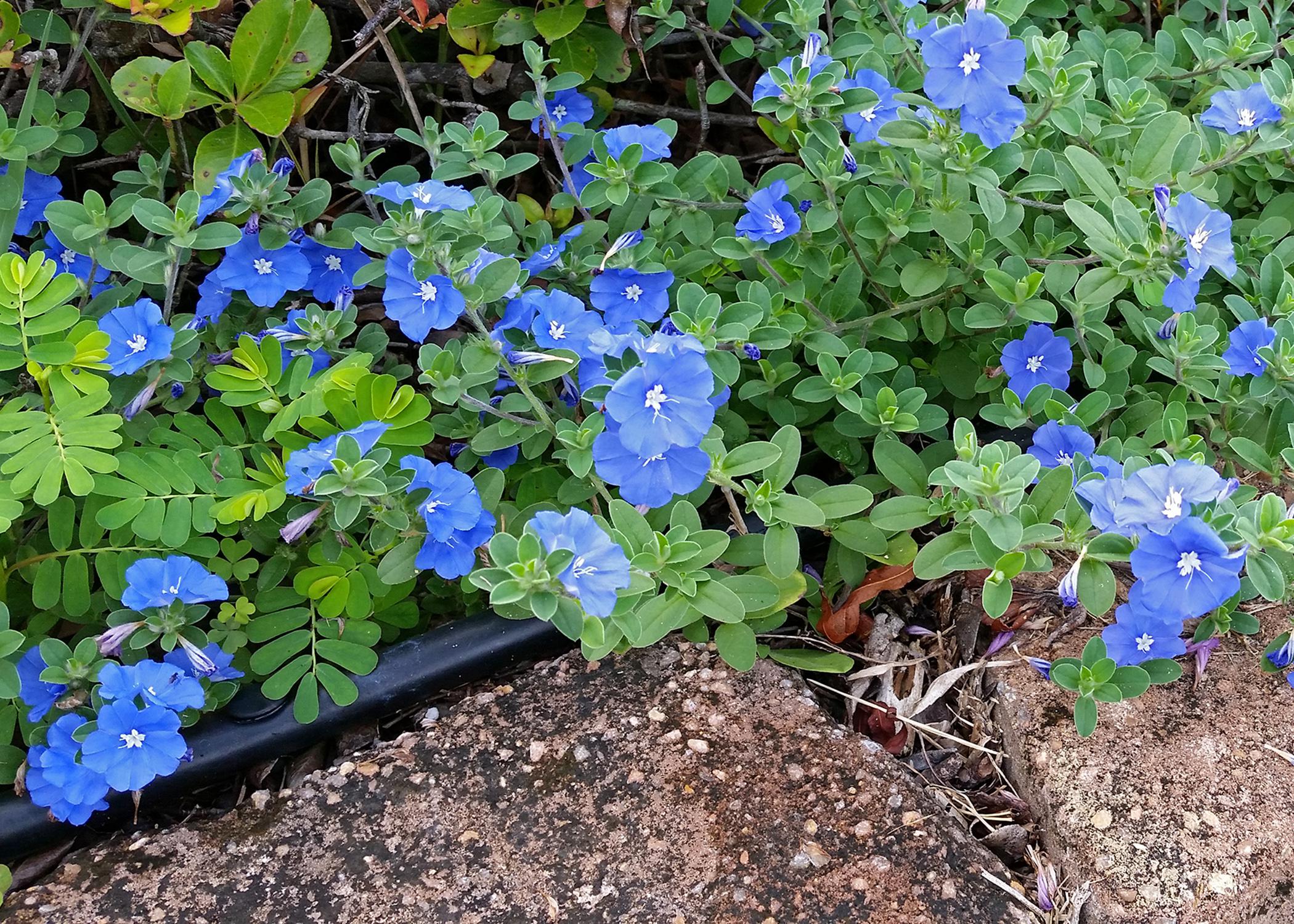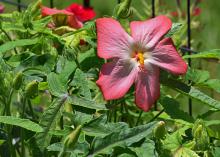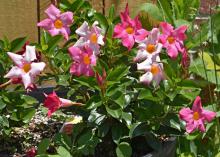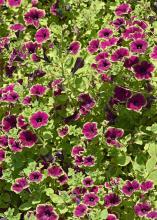Information Possibly Outdated
The information presented on this page was originally released on June 22, 2015. It may not be outdated, but please search our site for more current information. If you plan to quote or reference this information in a publication, please check with the Extension specialist or author before proceeding.
Tour explores Gary's landscape and garden
Most gardeners have favorite landscape plants they use every year, and I’m no different. But I also like to try new plants I see in garden centers or learn about from perusing winter catalogs.
This week, I want to tell you about some of the plants that are so far performing well in my landscape.
One plant I like to grow each summer is Blue Daze evolvulus, because this is an easy-to-care-for plant that needs minimal attention. Blue Daze has been around for a long time and was one of the first plants chosen as a Mississippi Medallion winner in 1996.
I like the fast-spreading growth rate that makes Blue Daze a good ground cover in front of an Indian hawthorn planting in my front landscape. While Blue Daze is described as not being invasive, every couple of weeks I find I do need to trim some of the runners that are trying to make their way up into the Indian hawthorn.
The foliage has a downy appearance, and the 1-inch, funnel-shaped flowers are sky blue. The flowers open for only one day. In the morning, they are brilliant, but by afternoon, they look quite spent, especially as the planting bed faces west and receives a high heat load each afternoon. A location with a little afternoon shade would be welcome, but too much shade reduces total flowering. Blue Daze needs to be planted in well-drained soil that is consistently moist.
Mandevilla vines with their gorgeous, trumpet-shaped are a favorite with many gardeners, but I like Dipladenia better. I get the beautiful flowers and don’t have to worry about having a structure for them to climb. The bushy growth of dipladenia make it a perfect choice for me to grow in a full-sun container without additional support.
The flowers and foliage of Dipladenia are smaller than Mandevilla, but I feel this enhances their landscape value. Keep consistent container moisture, and feed yours every couple of weeks with a water-soluble fertilizer.
For my landscape, I don’t rely on garden centers entirely, as I like to start many of my own plants -- especially vegetables -- from seed. This is particularly true for vegetables I use as ornamentals in the landscape.
This year, I found Heirloom Pink Okra that produces pretty pink flowers with five petals and a white center. It makes sense for some okra to produce pretty flowers because okra is closely related to hibiscus. The catalog description indicates the plants will reach 3 feet tall, but I haven’t seen this yet. It may reach this height by the end of the season.
One of the benefits of being the Southern Gardener is that I have the opportunity to try out plants in my garden and landscape before they are introduced to market. I’ve written before about my gardening success with Pretty Much Picasso supertunia. Picasso in Burgundy is another bicolor Supertunia that I got to try that will be a must-have in 2016.
This plant features striking burgundy flowers, each with a mint-green edge. I think Picasso in Burgundy is a vigorous-growing plant that will reach 36 inches in diameter in my landscape this year. The flower production and branching sets this plant apart from other petunias available on the market.
I hope this little tour of parts of my garden and landscape has been enjoyable and provides inspiration for your gardening endeavors.











